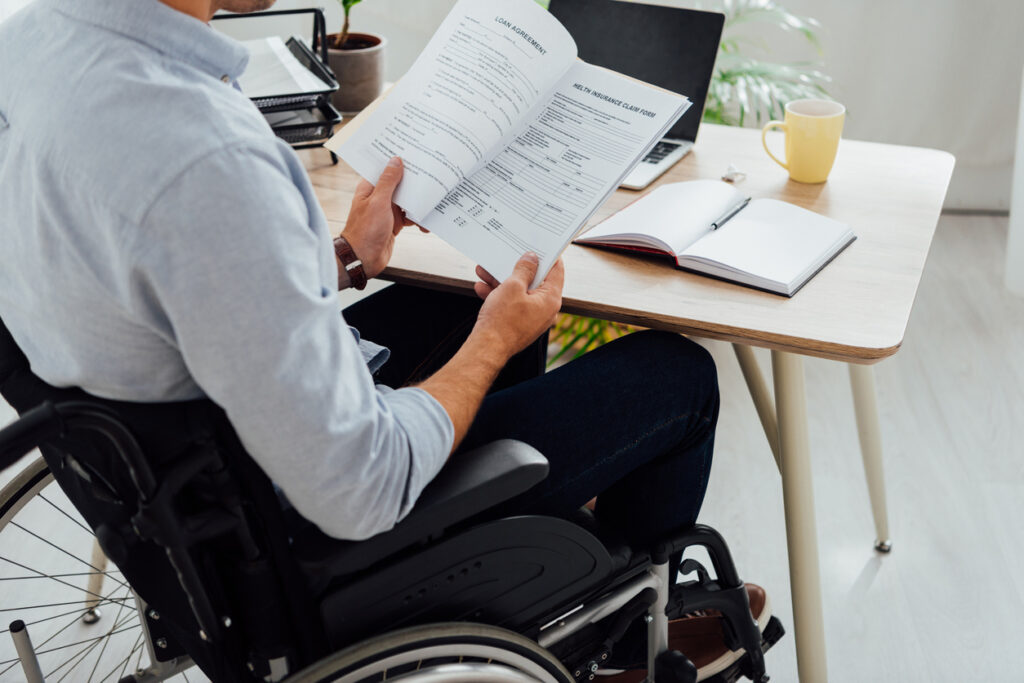Facing a denied Long-Term Disability Claim can be emotionally and financially overwhelming. Many individuals assume that appealing such a denial requires professional legal help, but that’s not always the case. With proper preparation, attention to detail, and an understanding of the process, it is possible to appeal a denied claim on your own and secure the benefits you deserve. This guide offers a practical breakdown of how to approach the appeals process without hiring legal representation.
Understanding the Nature of Your Long-Term Disability Claim
Before moving forward with an appeal, it’s crucial to understand what your Long-Term Disability Claim entails. Long-term disability insurance typically provides income replacement when you’re unable to work for an extended period due to illness or injury. Many of these policies are governed by the Employee Retirement Income Security Act of 1974 (ERISA), especially if your coverage comes through an employer-sponsored plan.
ERISA imposes specific rules and deadlines that must be followed precisely. While the system was designed to protect plan participants, its procedural requirements often create hurdles for individuals navigating it without legal assistance. Knowing what to expect at each stage will help you stay on track and avoid critical missteps.
The Importance of the Denial Letter
The appeal process begins with the denial letter issued by the insurance company. This document outlines the reasons for denying your Long-Term Disability Claim and serves as the foundation of your appeal. Carefully reviewing this letter allows you to identify the specific evidence or documentation that may have been lacking or misunderstood in your original application.
In many cases, the denial will cite a lack of objective medical evidence, inconsistencies in your medical records, or failure to meet the policy’s definition of disability. Understanding the reasoning behind the denial is the first step toward building a successful appeal.
Gathering Comprehensive Medical Documentation
When appealing without legal representation, your medical evidence becomes your most powerful tool. You’ll need to submit complete, up-to-date documentation from all treating providers. This includes progress notes, diagnostic tests, hospital records, and clearly worded medical opinions that align with your plan’s definition of disability.
Doctors’ statements should detail your functional limitations, explain how your condition prevents you from working, and reference specific clinical findings. To strengthen your Long-Term Disability Claim, ensure consistency across all reports. Any conflicting or vague medical language may be used by insurers to justify a second denial.
Understanding the Appeals Deadline and ERISA Timeframes
Under ERISA regulations, you typically have 180 days from the date you receive your denial letter to submit an appeal. Missing this deadline can permanently close the door to recovering benefits. Since you are appealing without legal representation, it’s vital to track all important dates and create a calendar to manage your time effectively.
If your plan is not governed by ERISA—for example, if you have an individual policy purchased outside of your employer—different deadlines may apply. In either case, acting quickly is essential. Gathering the necessary medical and vocational evidence can take weeks, so begin the process immediately after receiving your denial.
Structuring a Clear and Persuasive Appeal Letter
Your appeal letter acts as your legal argument, even if you’re not represented by counsel. It should be professionally written, concise, and focused. Use the denial letter as a roadmap and directly address each reason the insurer cited for denying your Long-Term Disability Claim.
When drafting your appeal, include the following elements:
-
A clear statement that you are appealing the denial
-
A summary of your medical condition and how it affects your ability to work
-
Identification of specific errors or omissions in the original review
-
An explanation of why your condition meets the policy’s definition of disability
-
A detailed list of the medical records and supporting documents you are submitting
Keep your tone respectful and formal. Avoid emotional language and focus on facts, timelines, and medical support. Since you may not get another opportunity to add evidence later in litigation, be thorough.
Appealing Without a Lawyer: Pros and Considerations
There are legitimate reasons why some individuals choose to proceed without a lawyer. For one, avoiding legal fees makes this option more affordable. In some cases, claimants are already well-versed in their condition and feel confident explaining it to the insurance company.
However, representing yourself comes with risks. You may not be familiar with ERISA’s technical requirements, which could lead to procedural errors. You might also miss out on interpreting subtle policy language or fail to address weaknesses in your claim. Still, if you’re prepared, detail-oriented, and committed to the process, self-representation remains a viable path.
Filing Your Appeal: Practical Steps
Once you’ve drafted your appeal letter and gathered the necessary documentation, send your appeal package to the appropriate address listed in your denial letter. Be sure to use certified mail or another trackable delivery service. Retain copies of everything you submit and keep detailed records of all correspondence.
You may also want to request a complete copy of your claim file from the insurer, which should include all materials they used to evaluate your Long-Term Disability Claim. This can give you insight into how your case was assessed and help you tailor your appeal accordingly.
Use of External Resources to Build Your Case
Navigating this process alone does not mean going in blind. The U.S. Department of Labor offers guidance on ERISA claims and appeals through dol.gov. This government resource can help you understand your rights, responsibilities, and timelines under the law.
In addition, understanding how other successful claimants have approached their appeals can be useful. For example, this guide to filing an appeal for a denied long-term disability claim outlines critical steps in creating a solid, self-directed appeal. If you’re navigating the process without counsel, it’s worth reviewing before submitting your own materials.
Ensuring Consistency Between Claims and Medical Records
One of the most common reasons for a denied appeal is inconsistency between what the claimant reports and what appears in their medical records. For example, if you report debilitating pain but your doctor’s notes mention “mild discomfort,” the insurer may seize on that discrepancy. To avoid this, communicate openly with your medical providers and ask them to describe your symptoms using language that clearly matches the severity of your condition.
Ensuring this alignment strengthens the credibility of your Long-Term Disability Claim and reduces opportunities for the insurer to misinterpret or misrepresent your condition.
Addressing Functional Limitations and Work Capacity
In your appeal, it’s not enough to describe your condition—you must explain how it impacts your ability to work. Describe your daily struggles, explain your inability to sit, stand, concentrate, or lift for extended periods, and connect these limitations to specific job functions.
If possible, include vocational assessments or job analyses that demonstrate the demands of your previous position and how your condition prevents you from meeting them. Even statements from previous employers or colleagues who can verify your limitations may add weight to your appeal, provided they are factual and professionally written.
The Role of Surveillance and Insurance Tactics
Many insurers engage in surveillance to look for activities that could contradict your disability claim. They may review social media posts, photograph your movements, or investigate your daily habits. This makes it essential to remain consistent in all areas of your life during the appeals process.
If you’ve been subject to surveillance, address it directly in your appeal. Provide context that explains what was observed—for example, a brief walk to the mailbox does not contradict an inability to perform full-time work. Anticipating and neutralizing such tactics is part of building a credible Long-Term Disability Claim appeal.
What Happens After You Submit Your Appeal
After submission, the insurer typically has 45 days to respond to your appeal under ERISA, with the possibility of a 45-day extension. During this time, they may request additional information or refer your claim to a reviewing physician. You should be notified of any delays or requests promptly.
If your appeal is successful, your benefits should resume with back pay for the denied period. If denied again, you’ll have the option of filing a lawsuit in federal court, but you’ll be limited to the evidence already submitted in the appeal. That’s why it’s critical to treat the administrative appeal as your one true opportunity to present your full case.
Conclusion
Appealing a denied Long-Term Disability Claim without legal representation is not an easy task, but it is entirely possible with the right approach. By understanding your policy, following ERISA guidelines, submitting strong medical evidence, and crafting a professional, comprehensive appeal letter, you can significantly improve your chances of success.
It’s a process that demands discipline, organization, and persistence—but if you believe your claim was unjustly denied, self-advocacy may be your path to restored benefits and financial relief.



